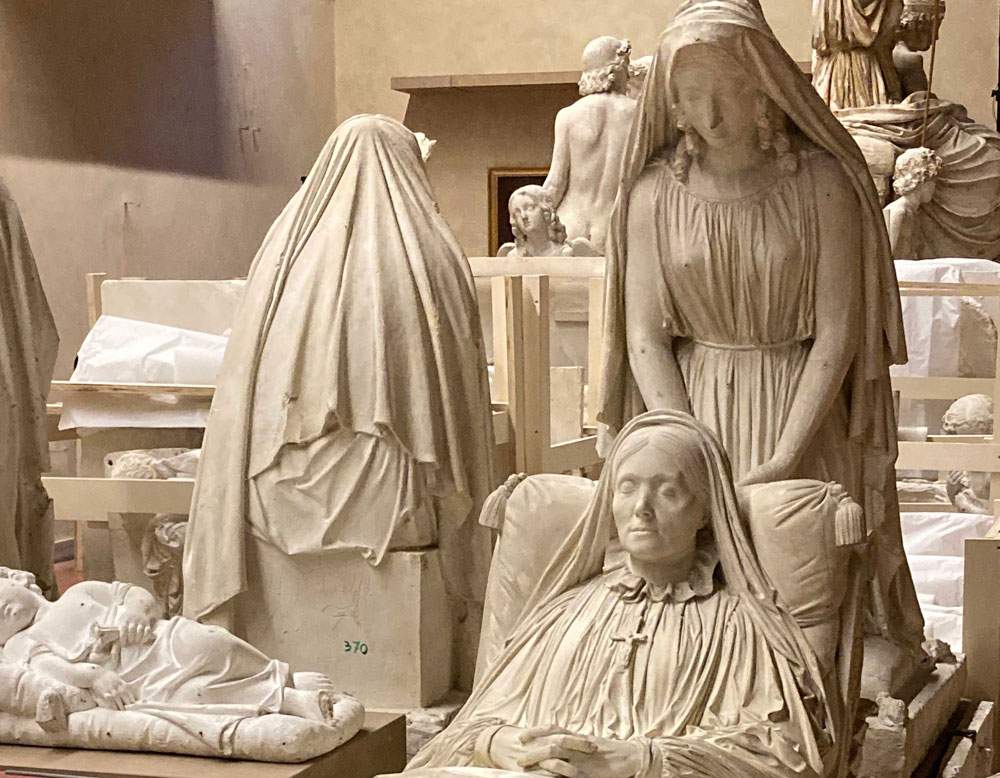Florence Academy Gallery: Gipsoteca restoration and digitization of Bartolini Archives underway
Construction work continues at the Accademia Gallery in Florence: after the Colossus Room, where work is still in progress, the Gipsoteca also needs structural and air-conditioning work. in addition, theBartolini Historical Archives will be digitized.
“The Gipsoteca is certainly one of the flagships of the Accademia Gallery,” says director Cecilie Hollberg. “These fundamental restoration and consolidation actions, which began in December 2020, give us the opportunity to turn the spotlight on the figure of an artist like Lorenzo Bartolini and his sculptures, which are exhibited here. A focus that will also be turned to deepening the Bartolini Historical Archive, which will be digitized in these coming months, allowing, once finished, to be consulted without compromising its preservation.”
The nineteenth-century hall of the Gipsoteca, formerly the women’s lane of the old San Matteo hospital, later incorporated into the Academy of Fine Arts, brings together the collection of plaster casts, almost all original models by Lorenzo Bartolini, among the most significant Italian sculptors active at the turn of the eighteenth and nineteenth centuries, and those of his pupil Luigi Pampaloni. After the artist’s death, the collection was acquired by the Italian state. In the display, Bartolini’s studio is ideally recreated, joined by twenty paintings by 19th-century masters who studied or taught at the Academy.
Work on the Gipsoteca necessarily involved moving the works on display here: the 264 portrait busts were moved from the shelves and, together with the sixty monumental sculptures and forty bas-reliefs, will be placed in other rooms of the Gallery. A thorough photographic campaign, conducted by Antonio Quattrone, has also been initiated, which will enable the museum’s headquarters to equip itself with a complete digital kit for documenting the work of the Tuscan sculptor. The plaster casts, with the coordination of the museum’s restorative officer and the support of a specialized restorer, underwent a careful check of their state of preservation with some plastering and maintenance work through dusting using soft bristle brushes and ad hoc vacuum cleaners, which allowed for the removal of dust deposits and dirt.
At the same time, the Accademia Gallery also began digitizing the Lorenzo Bartolini Historical Archive. The archive came to the museum premises thanks to two donations, in 2011 and 2013, from Friends of Florence and theFriends of the Museum of Musical Instruments Association. The two cores were purchased by the heirs and the records were carefully reorganized and inventoried. Divided into nine series, the archive features personal and business correspondence, correspondence related to the commissioning of works, legal and accounting records, notebooks with drawings and printed material. The documents date from 1810 to 1850, the year of the sculptor’s death, while later documentation, dated up to 1935, traces events related to inheritance matters.
There are about 12,800 manuscript papers in the Archives; it also includes about 870 pages of printed material, mainly from the 19th century: books, pamphlets and newspaper articles.
Approximately six months of work is expected to be needed to optically scan the documents in the Bartolini Archives.
Pictured is the unpacking of the Gipsoteca.
 |
| Florence Academy Gallery: Gipsoteca restoration and digitization of Bartolini Archives underway |
Warning: the translation into English of the original Italian article was created using automatic tools. We undertake to review all articles, but we do not guarantee the total absence of inaccuracies in the translation due to the program. You can find the original by clicking on the ITA button. If you find any mistake,please contact us.





























